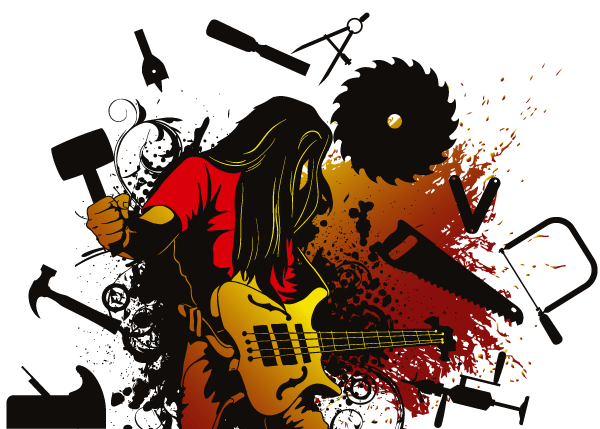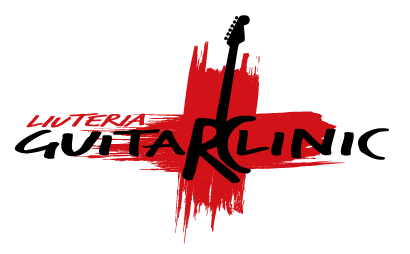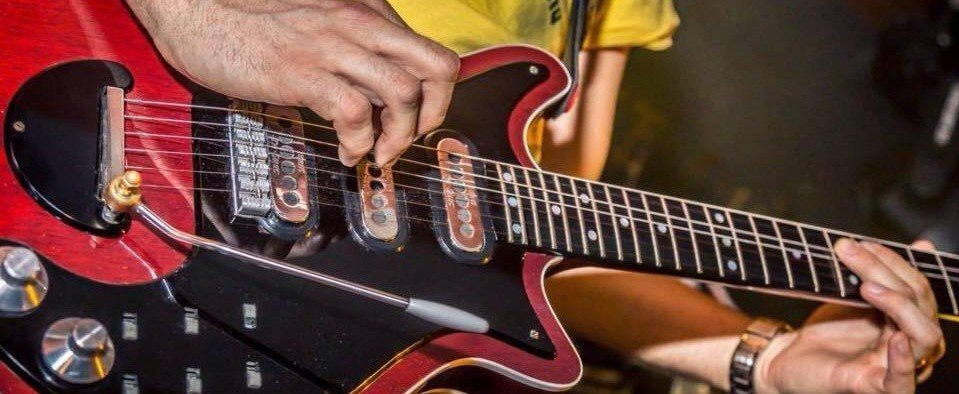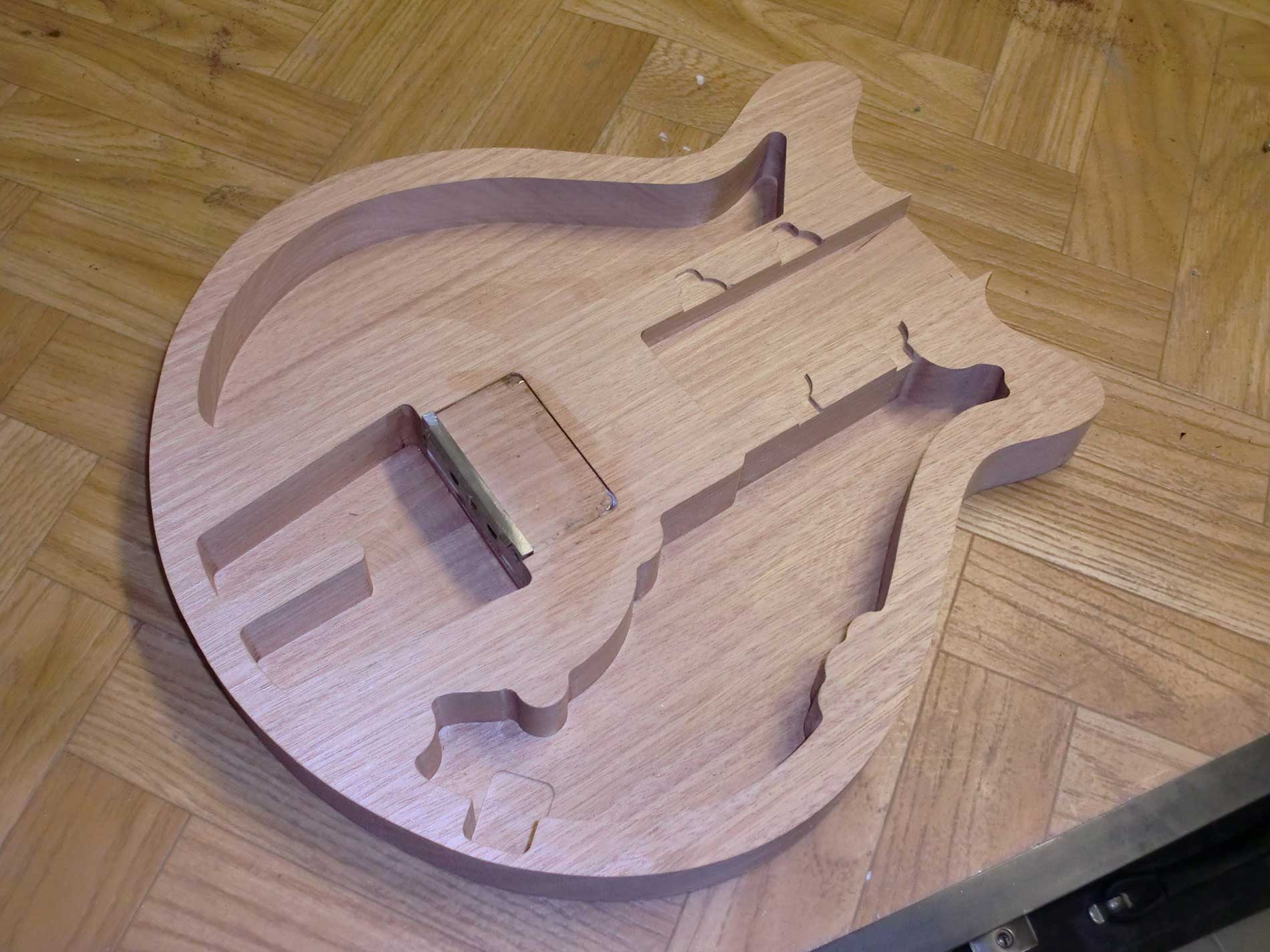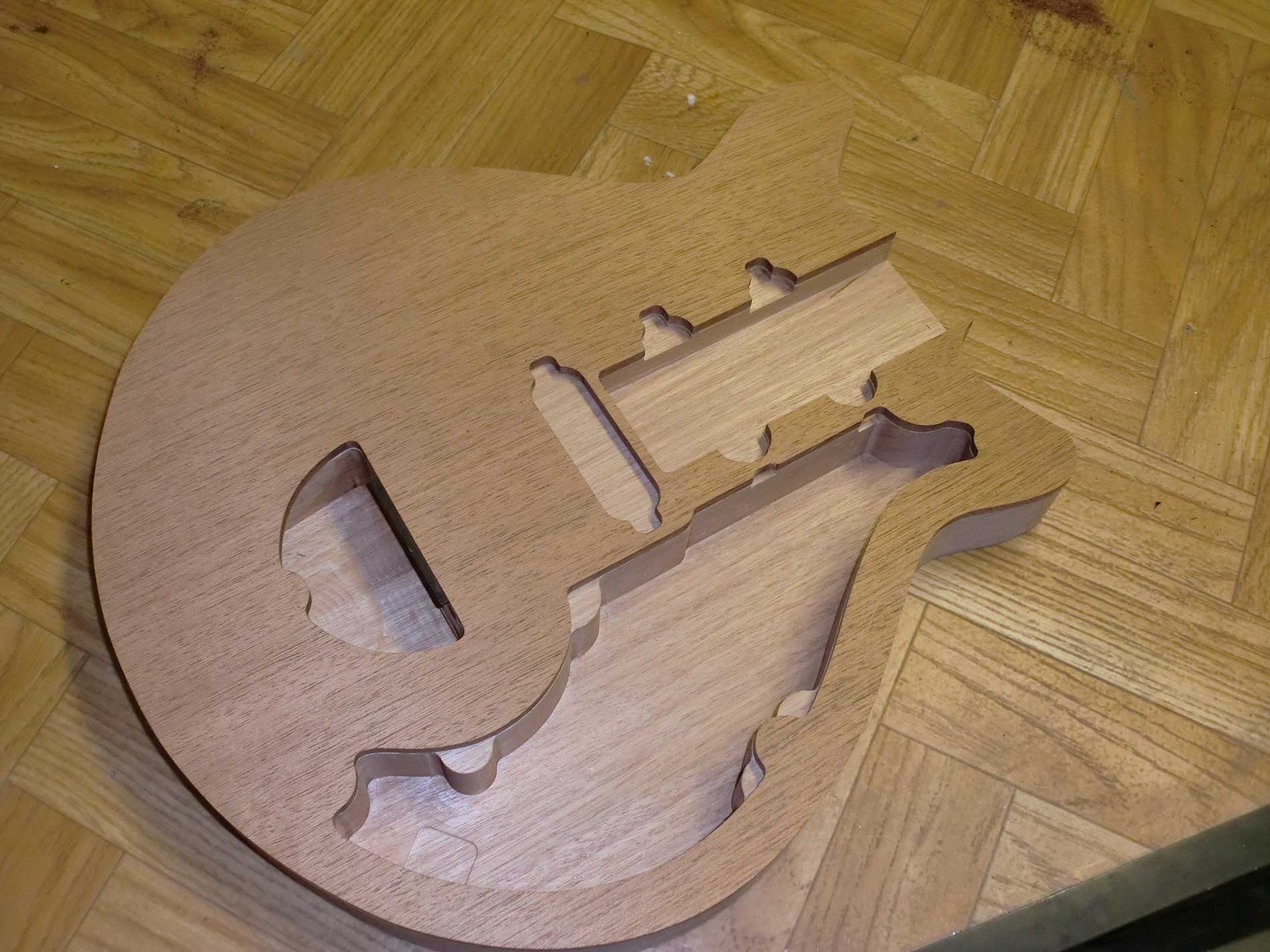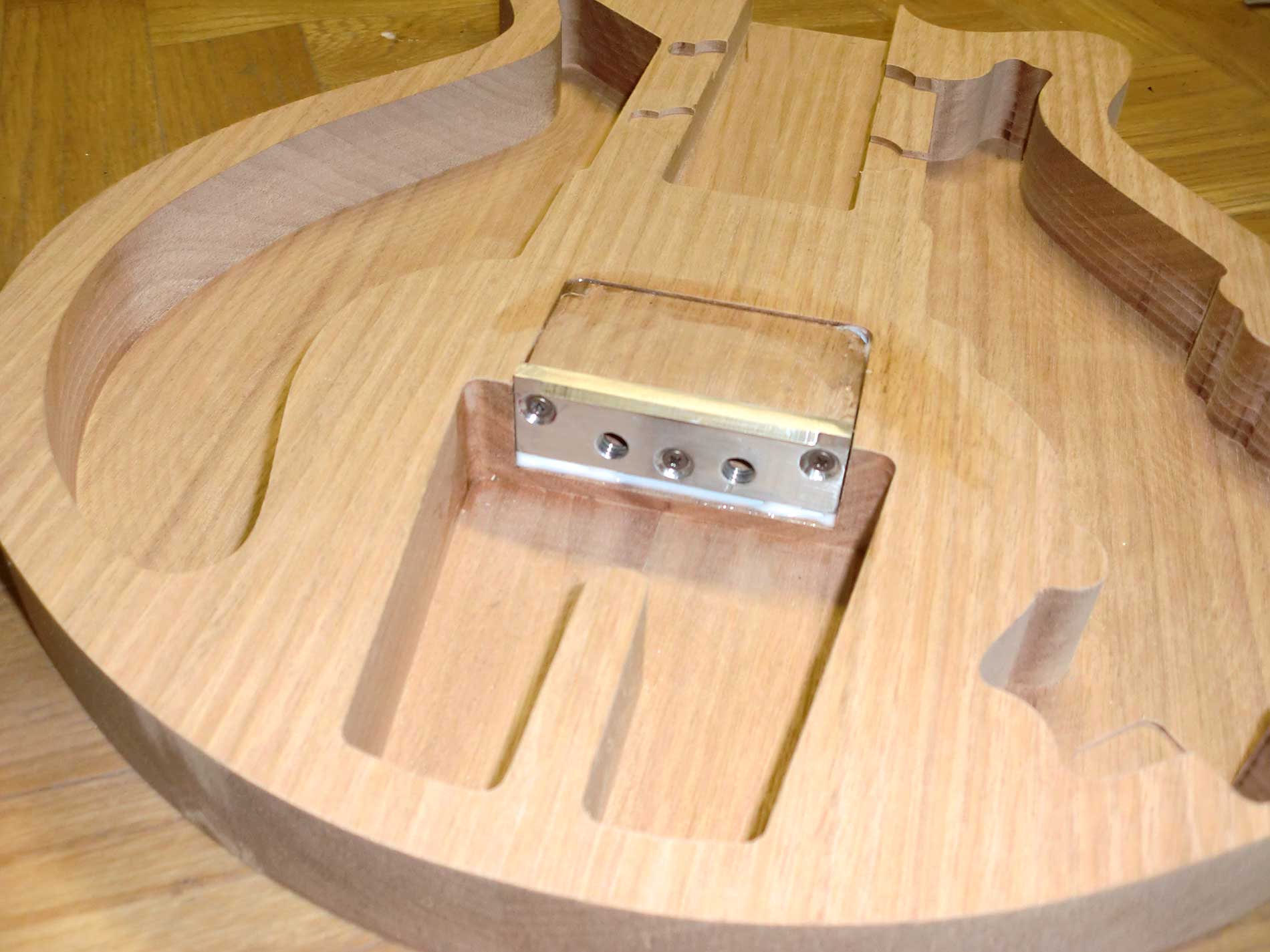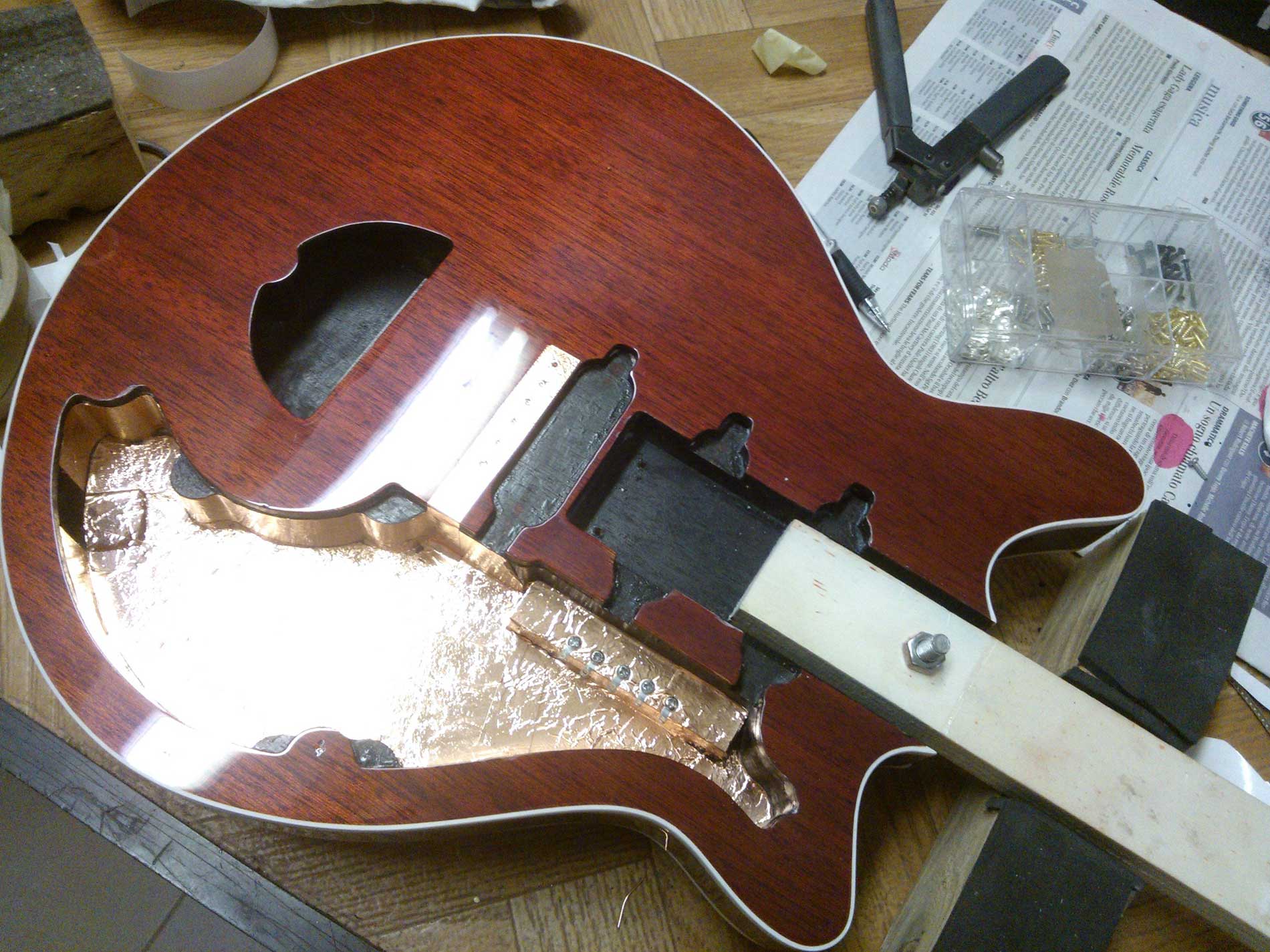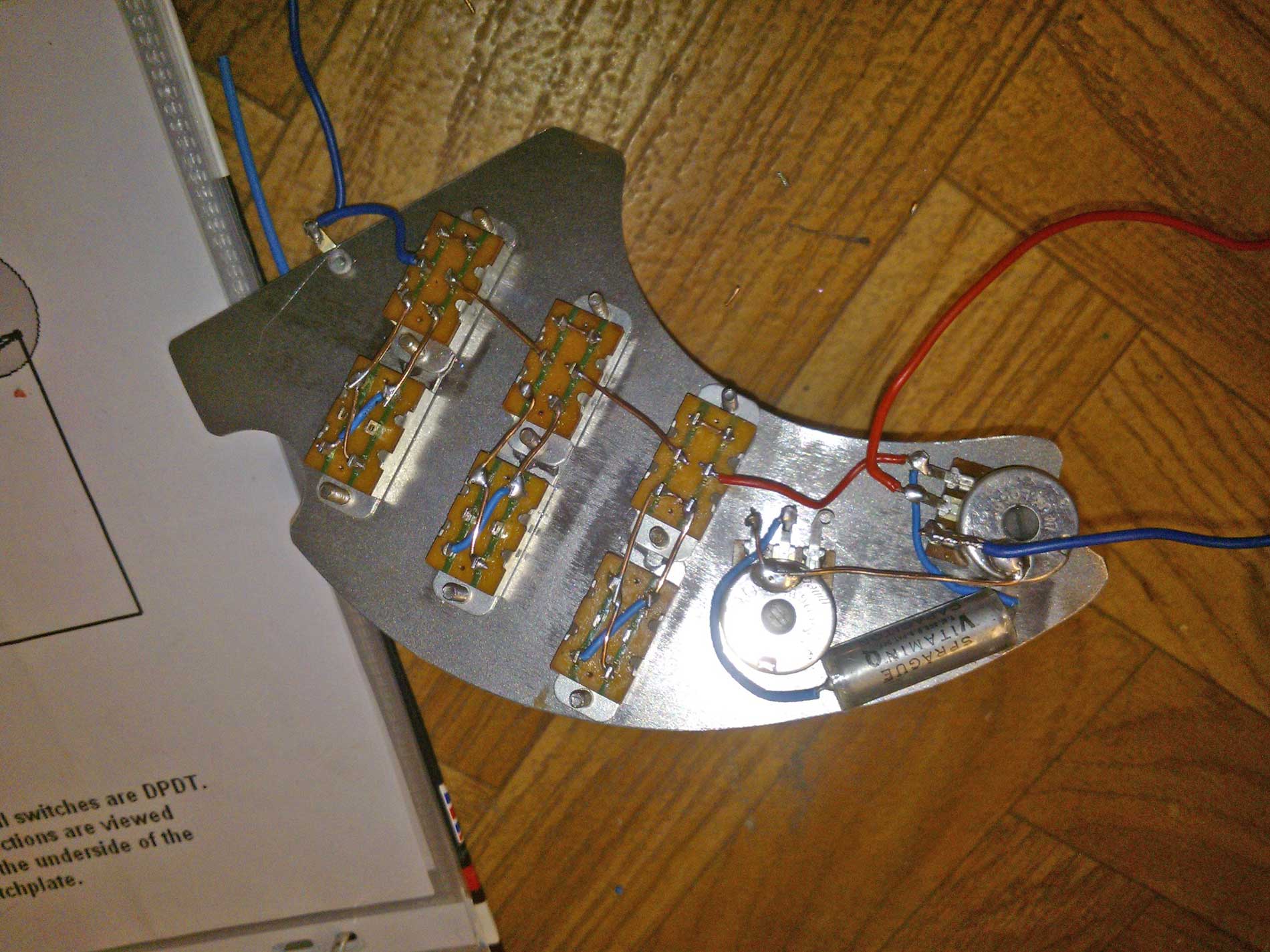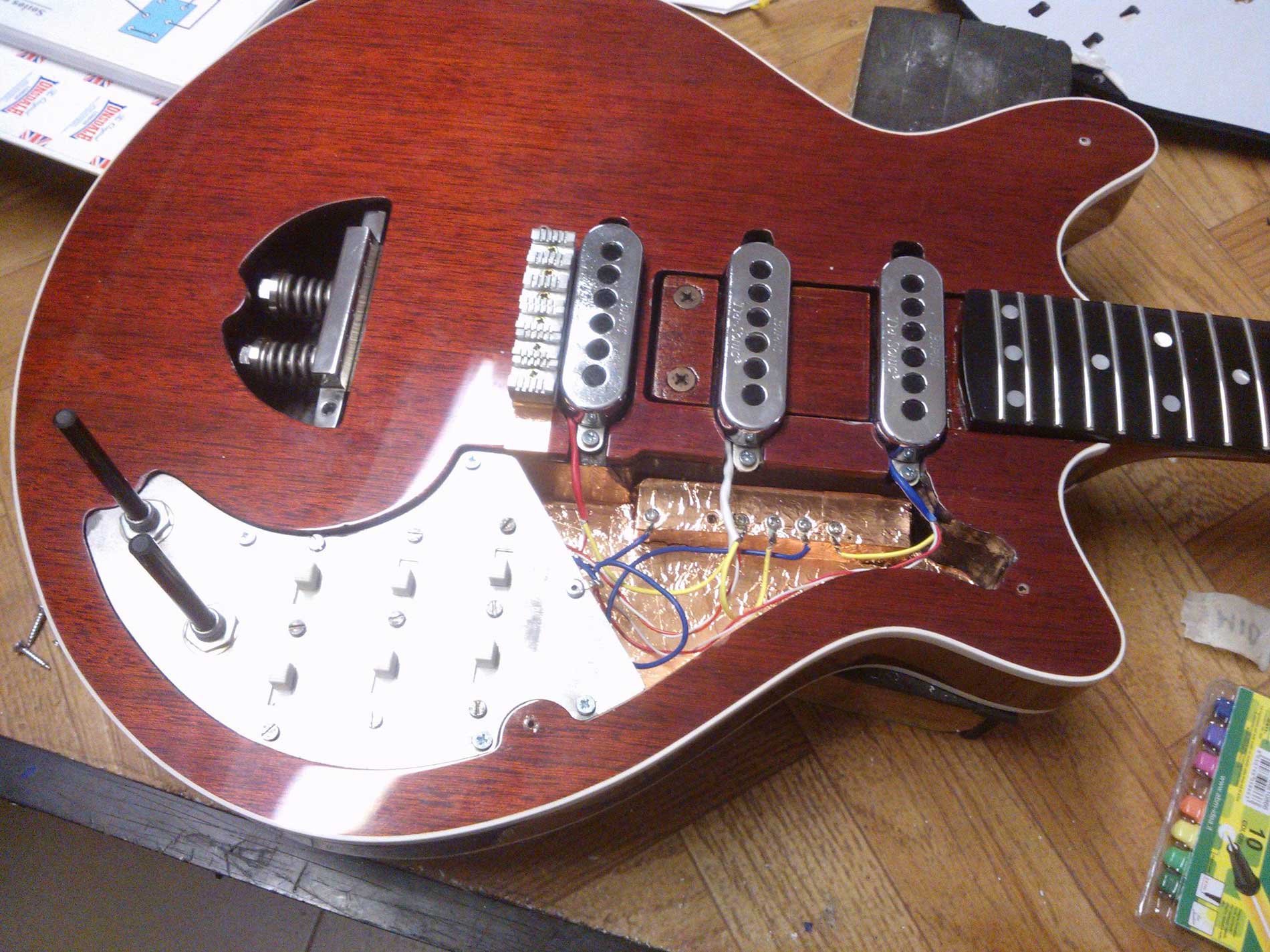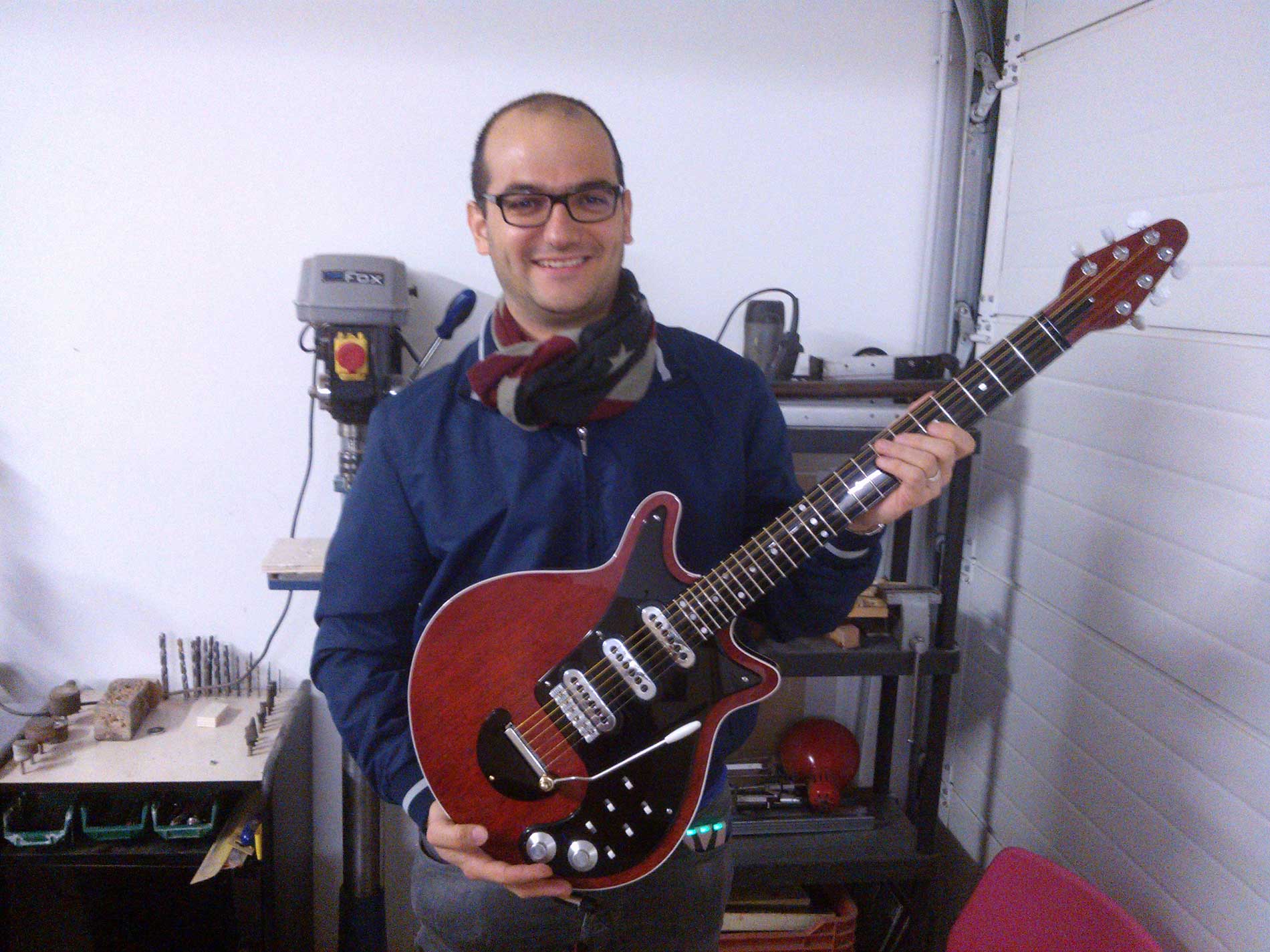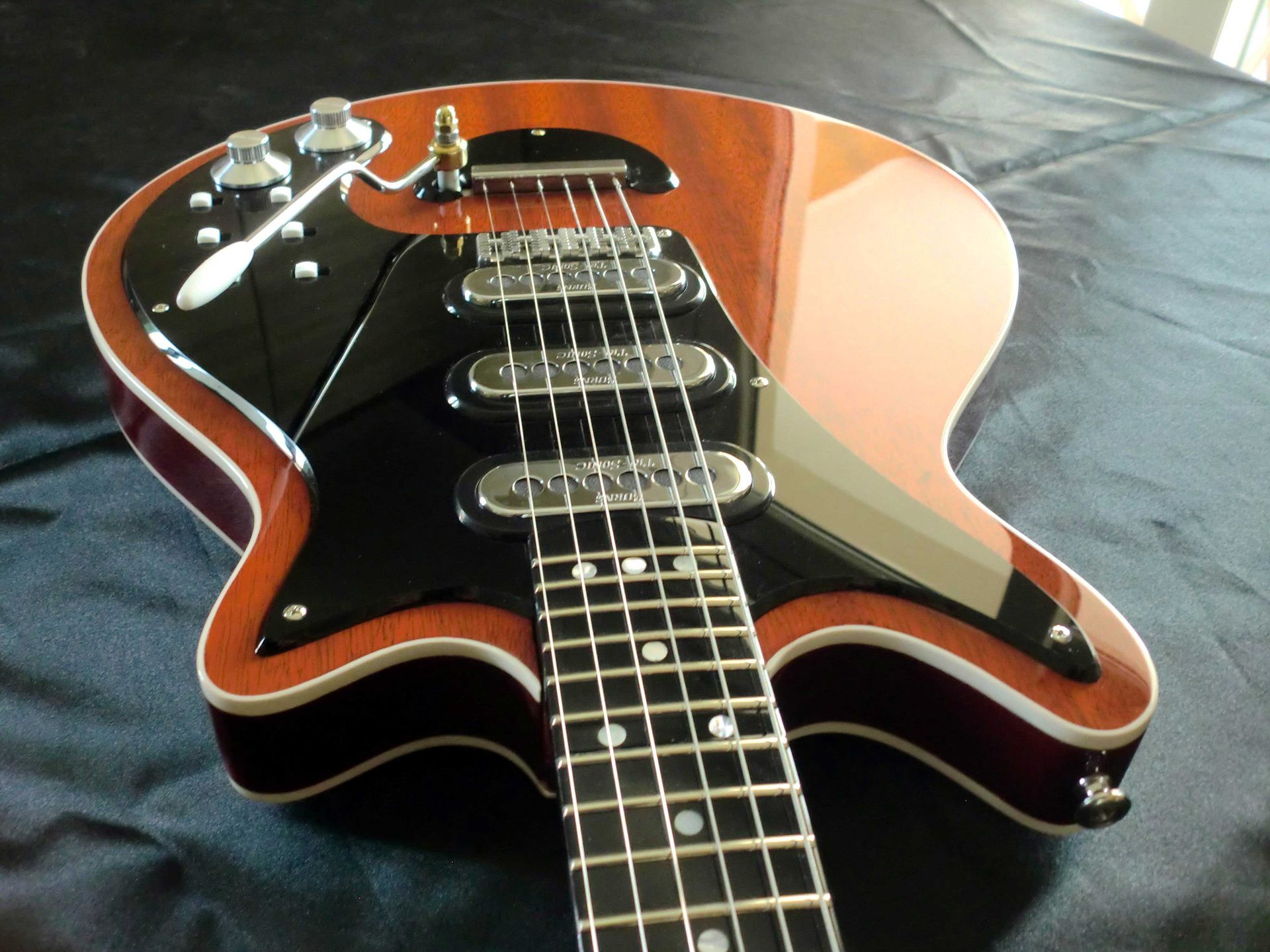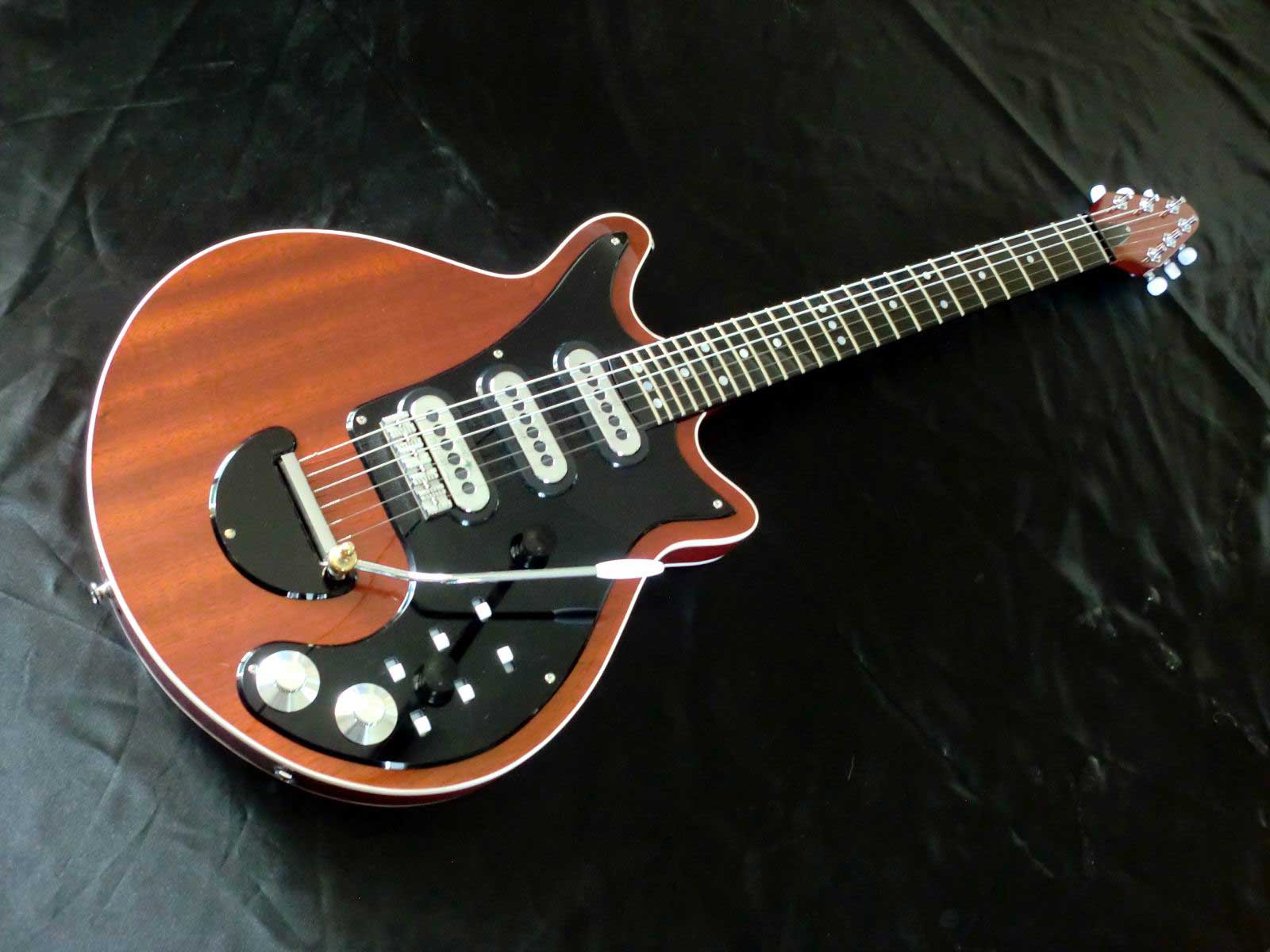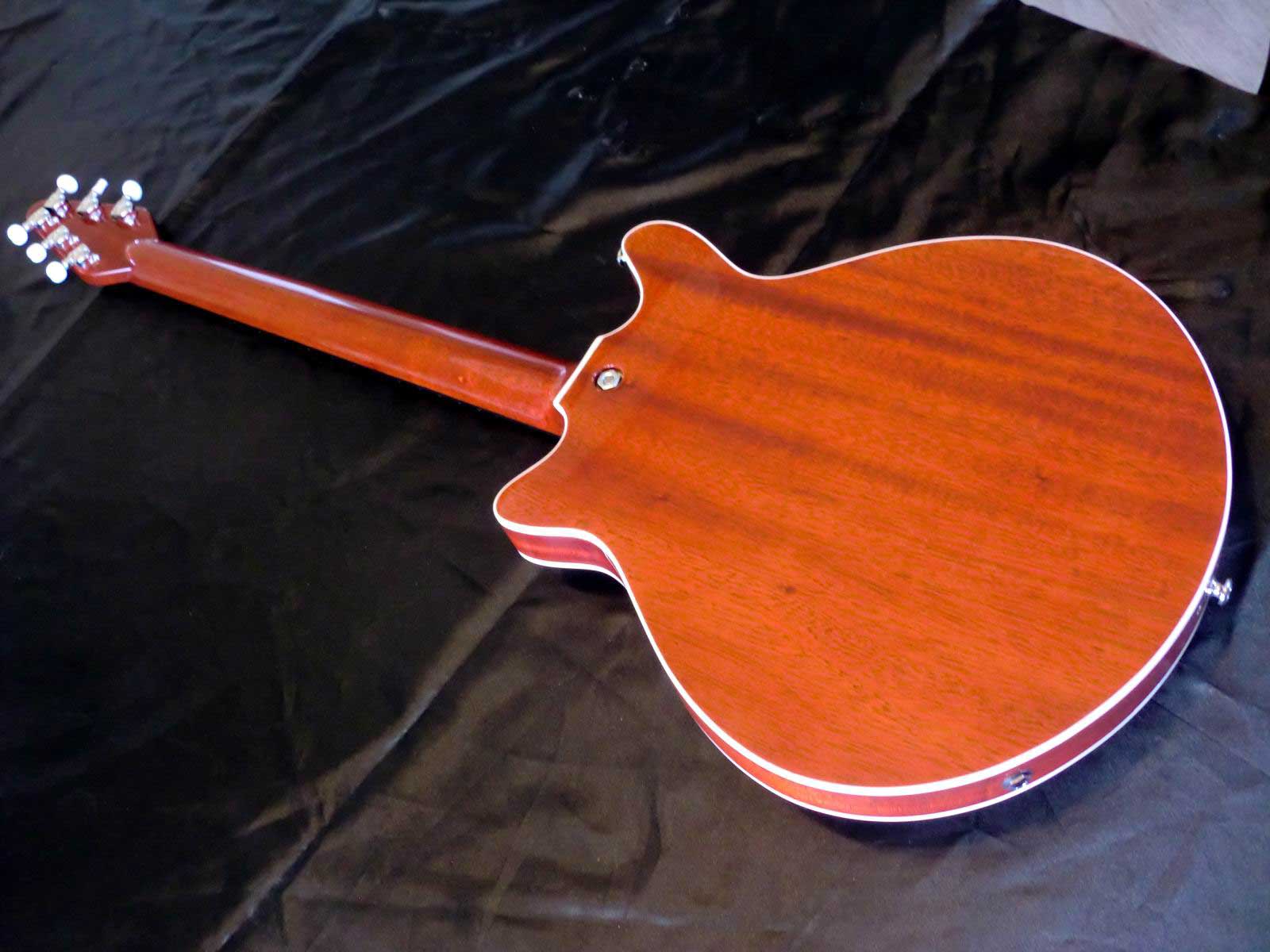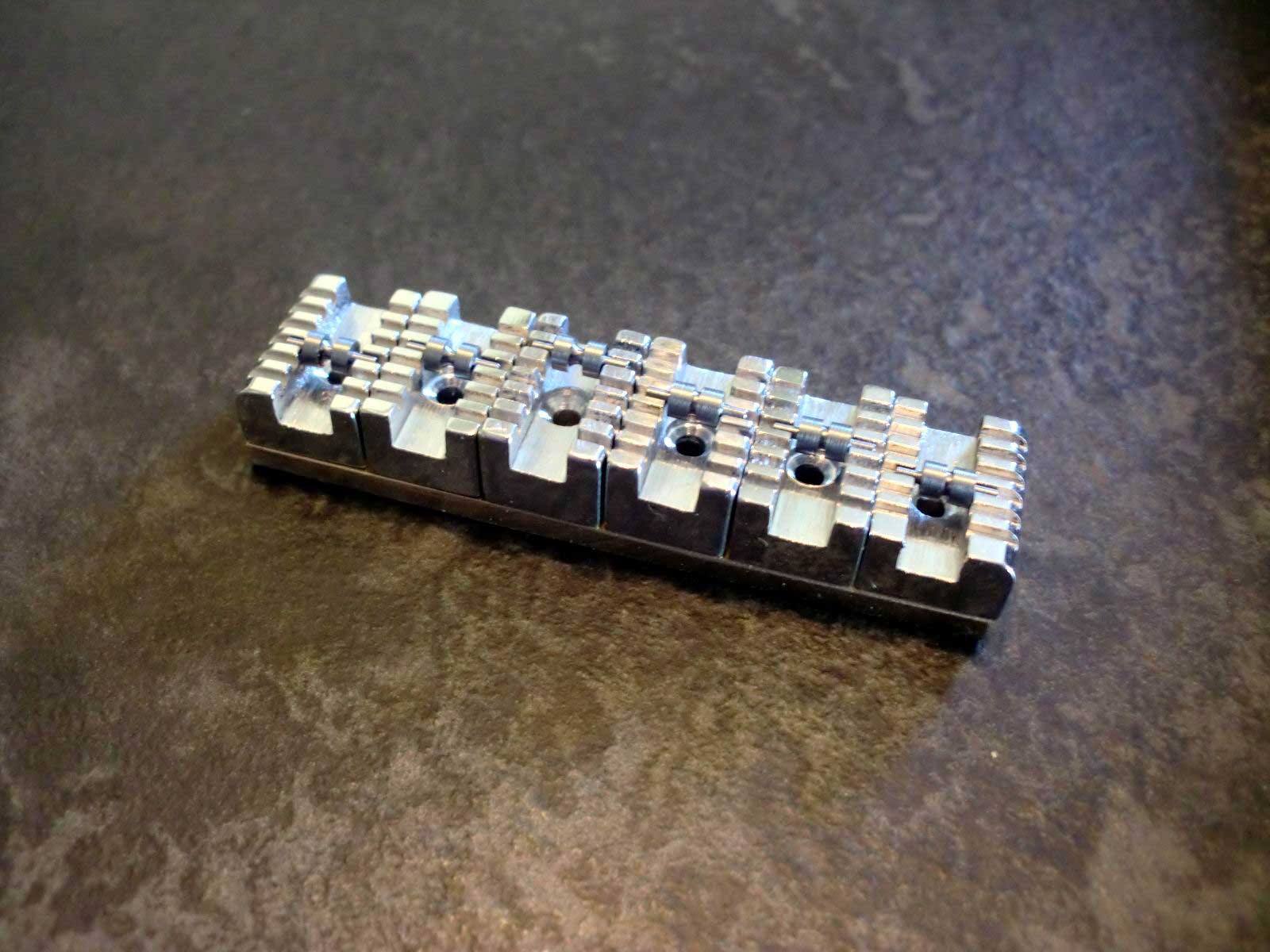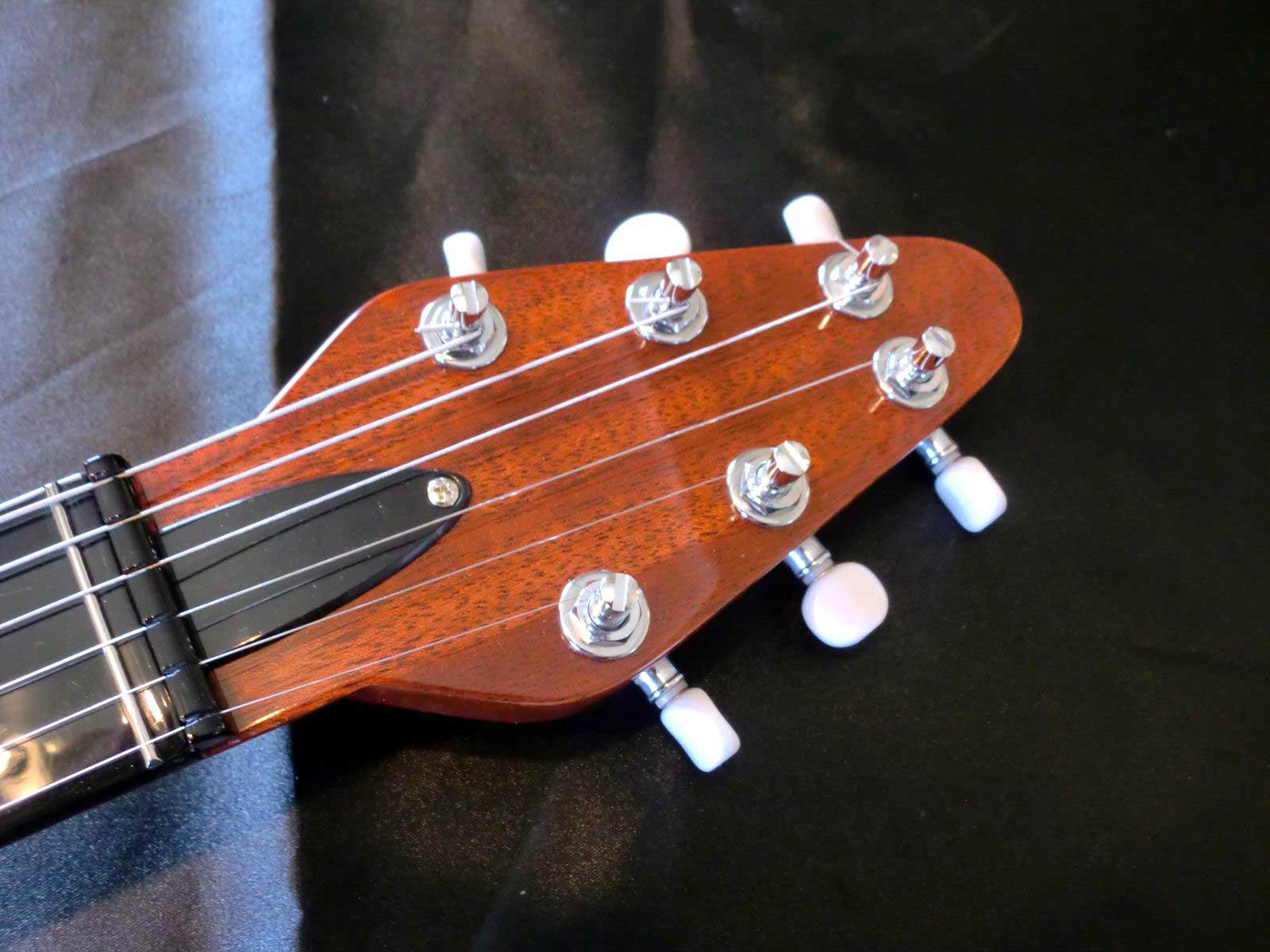Repliche

- (IT) Tutto ebbe inizio...
... nell' agosto del 1963, in una piccola camera da letto trasformata in laboratorio nella casa della famiglia May a Feltham. Qui Brian, aiutato dal padre, ricavò da un vecchio caminetto, che un amico di famiglia stava per buttare, buona parte della sua futura 6 corde (ecco il nomignolo "fireplace" - "caminetto").
Il manico, ad esempio, fu sagomato a mano fino a raggiungere la forma desiderata, cosa che si rivelò piuttosto impegnativa data l' età del legno e, soprattutto le sue condizioni (ancora oggi, a detta di Brian, è possibile trovarci due buchi di tarli !). Quando parve avvicinarsi ai desideri del ragazzo, il manico fu avvitato al corpo, non prima però di aver aggiunto il truss-rod (tirante metallico) per mantenerlo rigido.
La cassa invece fu messa insieme con un pezzo di quercia durissimo, per sorreggere i pickup e il ponte, da un asse e frammenti recuperati qua e là, con il risultato finale di ottenere una sorta di semiacustica (al blocco centrale sono incollati i fianchi e due fogli di mogano per dare al tutto l' apparenza di una solid-body). Il manico fu completato con una bella tastiera (scala 24") in quercia dotata di 24 tasti, comprati da Clifford Essex a Cambridge Circus, ma modificati per risultare molto più bassi, e dai segnatasti in madreperla ricavati dai bottoni della madre. A tal proposito bisogna notare che Brian decise di posizionare questi ultimi in modo particolare, cioè mettendone due al 7° e 19° tasto e tre al 12° e 24°. La cassa fu invece completata dai pickup e dal ponte.
I primi dovette comprarli, affidandosi a tre Burns Tri-Sonics, modificati rifacendone (pare) l' avvolgimento e riempiendone l' interno con resina epossidica per evitare l' effetto microfono. A dire la verità Brian e il padre avevano inizialmente costruito anche quelli (così come avevano fatto con la sua chitarra classica), ed erano anche riusciti bene, tranne che per un piccolo particolare: essendo questi con polarità nord-sud-nord-sud-nord-sud, invece che nord-nord-nord-nord-nord-nord come i pickup normali, generavano un suono sgradevole a seguito dell' uso del bending.
Il tremolo, pezzo forte di tutta la chitarra, venne fuori da una lama d' acciaio temprato su cui faceva perno il blocco principale (a cui naturalmente era collegata la leva del vibrato). La tensione delle corde venne controbilanciata da due molle provenienti dalle valvole di una moto e, per ridurre al minimo l' attrito, il ponte fu dotato di rotelline per consentire alle corde di ritornare perfettamente alla tensione originale dopo l' uso della leva; per lo stesso motivo invece il manico fu dotato di un tasto zero e guida in grafite (materiale autolubrificante).
E il nome Red Special? Naturalmente deriva dalla colorazione rossastra che mette in risalto le già belle venature del mogano. Brian usò della vernice Rustin che passò a più riprese su tutta la chitarra.
Corpo: mogano, semi-acustico
Spessore del corpo: 40 mm
Manico: Mogano
Tastiera: Quercia/ebano verniciata di nero
Scala: 24"-610 mm
Numero di tasti: 24
Segnaposizione: 3°, 5°, 9°, 15°, 17°, 21°, 7°, 19°, 12° e 24°
Raggio della tastiera: 9"
Capotasto: Tasto "Zero" con guida in grafite
Inclinazione del manico: 2°
Inclinazione della paletta: 4°
Pickups: Adeson marchiati Burns Tri Sonic, i migliori per il suono di May
Ponte: Autocostruito dalla guitarclinic
Tremolo: Autocostruito dalla guitarclinic
Controlli: Volume e Tono generali, Interruttori On/Off e Fase In/Out per ogni pickup
- (EN) It all started...
It all started in August 1963, in a small bedroom turned into laboratory in the family home in Feltham May. Brian here, helped by his father, drew from an old fireplace, a family friend who was about to throw, a good part of his future 6 strings (that's the nickname "fireplace"). The handle, for example, was shaped by hand until it reaches the desired shape, which turned out to be quite challenging given the age of the wood, and above all its conditions (even today, according to Brian, you can find two holes worms!). When it seemed closer to the wishes of the boy, the handle was screwed to the body, but not before you add the truss-rod (metal rod) to keep it rigid. The cash instead was put together with a piece of oak rough, to support the pickups and the bridge, by an axis and recovered fragments here and there, with the final result to obtain a sort of semi-acoustic (to the central block are glued to the sides and two sheets of mahogany to give all the appearance of a solid-body). The handle was completed with a nice keyboard (24 "scale) in oak with 24 keys, bought by Clifford Essex Cambridge Circus, but modified to be much lower, and the inlays in mother of pearl buttons obtained from the mother. In this regard, it should be noted that Brian decided to place them in a particular way, that is, by placing them on the 7th and 19th fret and three at 12 ° and 24 °. The case was instead completed by the pickup and the bridge. The first had to buy them, relying on three Burns Tri-Sonics, modified redoing (apparently) the winding and filling the inside with epoxy to prevent the microphone effect. Actually Brian and his father had also initially built ones (as they had done with his classical guitar), and were also managed well, except for one small detail: as these polarity north-south-north-south-north-south instead of north-north-north-north as the normal pickup, generated an unpleasant sound following the use of bending. The tremolo, highlight of the whole guitar, came out of a blade hardened steel pin which was the main block (which of course was connected vibrato arm). String tension was offset by two springs from the valves of a motorcycle and, to minimize the friction, the bridge was equipped with wheels to allow the strings to return perfectly original voltage after the use of leverage; for the same reason, however the handle was fitted with a zero key and guide graphite (self-lubricating material). And the name Red Special? Naturally derived from the reddish colour that highlights the already beautiful grain of the mahogany. Brian used paint Rustin who passed on several occasions throughout the guitar.
Corpo: mogano, semi-acustico
Spessore del corpo: 40 mm
Manico: Mogano
Tastiera: Quercia/ebano verniciata di nero
Scala: 24"-610 mm
Numero di tasti: 24
Segnaposizione: 3°, 5°, 9°, 15°, 17°, 21°, 7°, 19°, 12° e 24°
Raggio della tastiera: 9"
Capotasto: Tasto "Zero" con guida in grafite
Inclinazione del manico: 2°
Inclinazione della paletta: 4°
Pickups: Adeson marchiati Burns Tri Sonic, i migliori per il suono di May
Ponte: Autocostruito dalla guitarclinic
Tremolo: Autocostruito dalla guitarclinic
Controlli: Volume e Tono generali, Interruttori On/Off e Fase In/Out per ogni pickup
Repliche - RED SPECIAL
Lavorazione del body in mogano con camere tonali
Repliche - RED SPECIAL
Lavorazione del body in mogano con camere tonali
Repliche - RED SPECIAL
Red Special ultimata
Repliche - RED SPECIAL
Body in finitura con schermatura in rame vano elettronica
Repliche - RED SPECIAL
Elettronica formata da 6 switch ,
3 on-of e 3 inversione di fase potenziometri 220k -
condensatore Sprague Vitamin Q
Repliche - RED SPECIAL
Body in finitura con schermatura in rame vano elettronica
Repliche - RED SPECIAL
Luca Colombo - Tribute Mercury Band
Repliche - RED SPECIAL
Red Special ultimata
